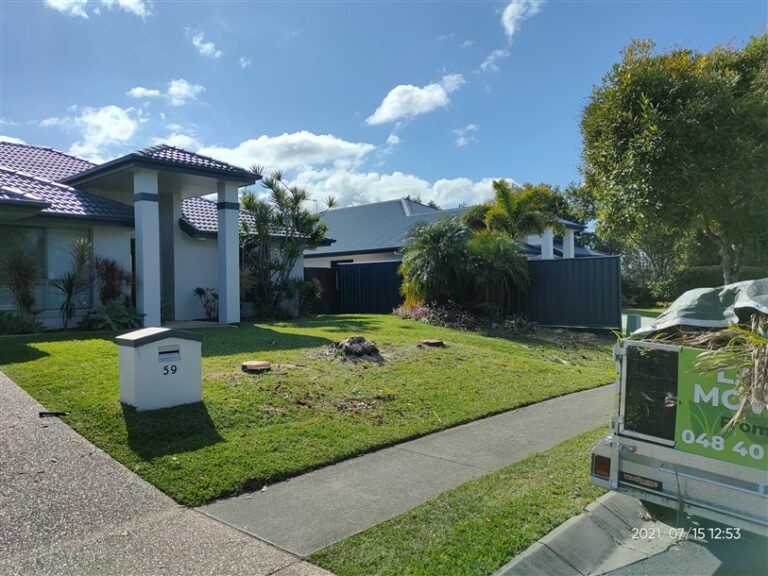STUMPWORKS QLD – PROMPT PROFESSIONAL SERVICE
STUMPWORKS QLD – PROMPT PROFESSIONAL SERVICE
We assess the potential need for stump grinding alongside tree removal proposals. While not always essential, many individuals prefer addressing stump removal simultaneously with tree extraction. Stump grinding permits property owners to utilize the vacant space for laying sod or creating flower beds. Moreover, the resulting mulch from the stump grinder offers various applications around the yard. Here are responses to common inquiries about stump grinding.
The depth that the stump grinder can reach is as follows:
Usually, we grind approximately four to six inches below ground level. Deeper grinding can be requested, albeit at a potentially higher cost. However, the grinding depth has certain limitations:
The stump-grinding blade, with a diameter of around 10 inches, can only be maneuvered within a specific vertical range.
Trees growing in shallow soil, like those over limestone bedrock, might not offer six inches of grindable depth.
Other objects surrounding the tree, such as fencing, concrete, rock, or neighboring tree roots, can limit grinding depth. The grinder is designed for plant material, wood, and dirt, excluding non-natural elements.
We take care not to interfere with utility lines, cables, or irrigation systems during grinding, but unexpected barriers could require shallower grinding.
The grinding process generates mulch consisting of tree material and dirt. This mulch can be considerably more voluminous than the original stump, analogous to cheese being grated. Stump grinder mulch, being organic and composed of smaller wood particles, decomposes more rapidly than conventional mulch. Our standard practice is to redistribute this mulch into the ground area that was ground (“backfilling”). Nevertheless, a sizable mound of mulch usually remains above ground, which settles fairly quickly but can be utilized in yards.
Stump grinder mulch is useful for composting or flower beds, although its longevity may differ from standard hardwood mulch. Over time, settled mulch can prepare the ground for sod or planting. We can provide mulch bagging or haul-off upon request, yet our typical approach is to leave the mulch on-site.
Certain tree species might send up shoots or new growth from remaining roots even after stump grinding. For instance, crape myrtles, chinaberry trees, hackberries, and Bradford pears are known to persistently regenerate. These sprouts can be managed and will eventually cease as the remaining roots exhaust their energy reserves. Organic methods like white vinegar or commercial root killer can hasten root dieback. Replanting in the same area is generally discouraged due to the extensive underground root system that persists even after grinding, potentially hindering the new tree’s establishment.
Uprooted trees, as in cases of storm damage or root rot, present challenges for stump grinding. If a significant portion of root material is above ground, the grinder might be unable to reach it. Also, weather conditions like prolonged rain can affect grinding. Special circumstances, like uprooted trees or multiple stumps in one area, require assessment by stump grinder before proceeding.
Stump grinding cost is influenced by stump size, location, and desired depth of grinding. Measuring the stump accurately involves starting from the farthest root point touching the ground and averaging measurements. Factors like machine size, clearance, and gate width determine accessibility.
Our standard stump grinder is seven feet long and three feet wide, with a rotating blade for chipping wood. Accessible areas require at least seven feet clearance. Stumps can be left for various purposes, such as using them as yard features or letting them decompose naturally. Chemical treatments can accelerate decay but might have environmental implications.
For further inquiries or information, feel free to contact Stumpworks Qld, where our stump grinding equipment are ready to assist you with your tree-related queries and needs.


Stumpworks QLD is a family-owned and operated business, a team made up of skilled professionals who enjoy their work and are dedicated to getting excellent results for our customers. Since 2022, we are dedicated in offering exceptional stump grinding and removal services in Sunshine Coast, Queensland, Australia.
2 Irving Pl, Sippy Downs QLD 4556, Australia